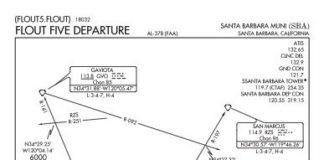The concept of crew resource management (CRM) was born in aviation. Airlines preach its benefits and train their pilots to work as a team. Flying a modern aircraft involves some complex task management, and dividing that workload between multiple people brings increased safety and efficiency.
ATC has an equally heavy reliance on CRM. If you’re on a center’s frequency, the controller whose voice you hear on the radio is working an “R-side” position, the primary center radar position. If he starts getting overloaded with aircraft, another controller may plug in beside him as a “D-side” to assist in making complicated keyboard entries, flight plan amendments, and coordinating with other controllers. The more eyes and hands at work, the better the service for pilots.
Approach radar controllers can also work with a “radar handoff” position open beside them to assist with inter-controller coordination and act as a second pair of eyes. He can also verbally coordinate pilot requests over landlines with other controllers. While he still can’t make flight plan amendments directly, the handoff can coordinate those amendments with the flight data controller.
One quick way to ease a controller’s workload is to subdivide their airspace or area of responsibility. For example, a control tower in the early morning, before the airport’s fully awake, may have only one controller in the cab, working Clearance, Ground, and Tower simultaneously. As the day wears on and traffic volume starts to build, there may be one working Tower and another on Ground and Clearance combined. If there’s a departure rush, Clearance may get split off as well. Larger towers like major airline hubs, will even staff multiple tower and ground positions on discrete frequencies.
Radar facilities apply the same concept, subdividing their radar sectors into smaller chunks that are easier to manage. A larger TRACON can have a dozen or more sectors, each with a radar display. Centers, with their massive airspace, are subdivided into “areas” each overseeing a specific geographical region. Each area contains multiple sectors, each with a radar display.
At peak traffic periods, most of the sectors will be staffed. Once the traffic starts dying down, the process is reversed, until all the sectors are recombined. On midnight shifts, for example, there might be only one controller working an entire TRACON or Center area. He’ll watch all of the airspace from a single display, zoomed out to oversee all of the sectors.
Behind the controllers, there are also front line managers—the fancy FAA term for supervisors—overseeing the operation. While they’re all certified to work traffic, an FLM’s primary job is to coordinate and pass information within their own facility and adjacent ATC facilities. They’re crucial during emergencies and other unusual situations. A good FLM on deck can provide much-needed support for controllers already trying to smooth out a complicated mess.
There’s really no substitute for seeing this kind of operation firsthand. I highly recommend touring your area ATC facilities to see how everyone works together to provide a service to you. —TK




